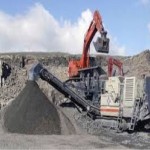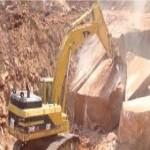 The primary hazard from working with stone is exposure to respirable dust, in particular respirable crystalline silica (RCS) dust. Silica is a natural mineral found in most rocks, sand, clay and in products such as bricks and concrete. Exposure to RCS dust causes silicosis, a debilitating and incurable lung disease. Exposure to RCS is also associated with the development of COPD and lung cancer.
The primary hazard from working with stone is exposure to respirable dust, in particular respirable crystalline silica (RCS) dust. Silica is a natural mineral found in most rocks, sand, clay and in products such as bricks and concrete. Exposure to RCS dust causes silicosis, a debilitating and incurable lung disease. Exposure to RCS is also associated with the development of COPD and lung cancer.
In the workplace these materials create dust when they are cut, sanded, carved etc. with the quantity of silica in the dust depending on the silica content of the stone being worked.
Noise and vibration are of course hazards also regularly encountered in these sectors due to the use of heavy machinery and power tools.
 Excessive exposure to hand arm vibration can lead to the development of Hand Arm Vibration Syndrome, a general term which includes symptoms such as Raynaud’s disease (vibration white finger), nerve symptoms, and muscular aches and pains.
Excessive exposure to hand arm vibration can lead to the development of Hand Arm Vibration Syndrome, a general term which includes symptoms such as Raynaud’s disease (vibration white finger), nerve symptoms, and muscular aches and pains.
Exposure to RCS and respirable stone dust can occur in a range of industries including; quarrying, mining, potteries, foundries, refractory production, monumental and restoration masonry and abrasive blasting.
Shorcontrol have considerable experience in the field of assessing exposure to respirable crystalline silica and respirable stone dust in a wide range of industries.
- Assessment of exposure to respirable crystalline silica and stone dust
- Recommendation for control of RCS and stone dust
- Workplace noise assessments
- Whole body and hand arm vibration assessment
Useful Resources and Links:

